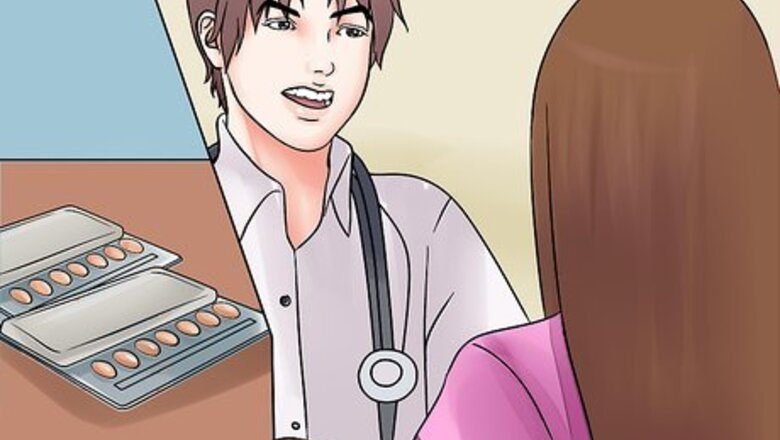
views
Addressing Hormonal Imbalances

Ask your doctor about hormonal therapy. Hormonal therapy is used as a way to increase menstrual flow when the cause of hypomenorrhea is hormonal imbalance. Hormonal therapy works by stabilizing hormonal ups and downs, which helps to regulate hormonal imbalance. It does this by interrupting the signals in the hypothalamic-pituitary-gonadal circuit which links the brain and the ovaries.
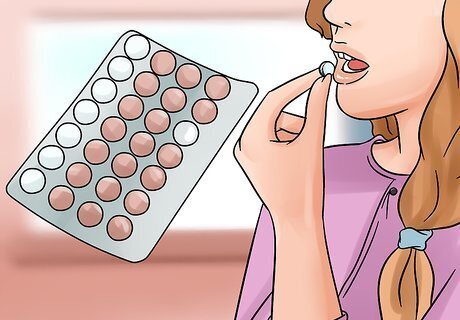
Take oral contraceptives. Oral contraceptives regulate and stabilize the reproductive hormones. Oral contraceptives are composed of a set of pills that should be taken for the whole month. There are two types of pills are found in each set: the pills which contain the hormones and the placebo pills which should be taken during the days of the period itself. Oral contraceptives come in packets of 21, 28 or 91 tablets. This should be taken by mouth, at the same time every day. It is important that you take your pill at the same time every day to prevent hormonal fluctuation and breakthrough bleeding. breakthrough bleeding. If one type of pill doesn't regulate your cycle and increase your menstrual flow, try another brand of oral contraceptive.
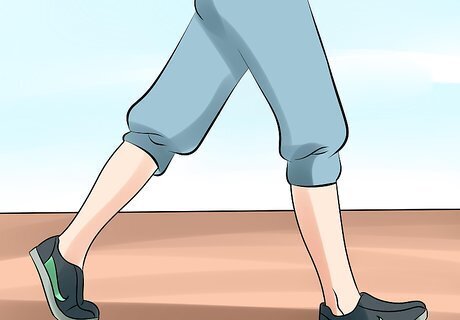
Switch to a healthier lifestyle. As hormonal imbalance is mostly a result of lifestyle choices, improving one's lifestyle is a good start. Over-consumption of cigarettes and alcohol cause hormonal imbalances in people regardless of sex. Therefore, refraining from smoking and limiting your alcohol consumption, coupled with proper diet and exercise will eventually restore normal production of hormones. Eat more foods with omega 3 and omega 6 fatty acids. These nutrients support the endocrine system, which is responsible for hormone production. Omega 3 and omega 6 fatty acids are most common in nuts, fish oils, vegetable oils and seeds.
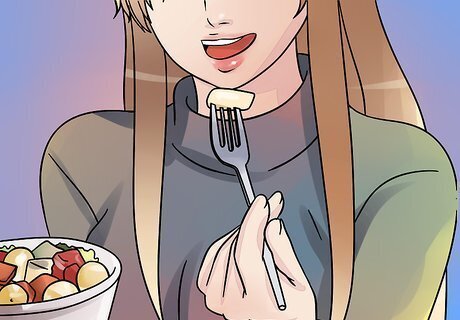
Eat organic, unprocessed foods. Fruits and vegetables are rich in vitamins and minerals. Opt for organic foods when possible and avoid processed or commercialized meat, dairy products or eggs as they may contain chemical additives and added hormones which could result in too much estrogen in your body.
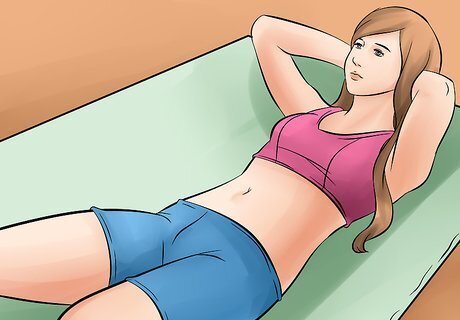
Exercise daily, but do not overdo it. Exercise stimulates the body's blood flow. It's recommended that you get 30 minutes of moderate exercise a day, as this should be enough to maintain a healthy estrogen level. Maintaining a healthy estrogen level increases menstrual blood flow and boosts the immune system.
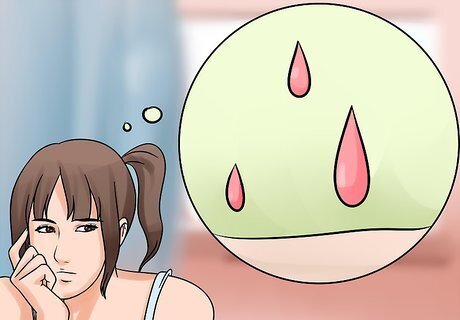
Know that the reduced menstrual flow may be caused by menopause. Menopause is part of a normal reproductive cycle. Between the ages of 45 and 55, the body produces less estrogen, causing people to menstruate infrequently and experience shorter periods. Herbalists mostly use black cohosh and Don quai to treat menopause and menstrual problems. These herbs contain phytoestrogen, a naturally occurring estrogen, which makes them quite effective. However, it is advised never to take these herbs during pregnancy as they can cause miscarriage.
Experimenting with Herbal Remedies
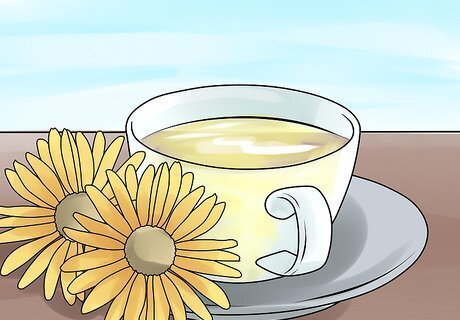
Make a tea with Marigold herb. Marigold helps to maintain uterine health; it cleanses the uterus without irritating the mucus membranes. Those with a hardened uterus should give this tea a try as it can regulate menstrual bleeding. For this purpose, drink marigold tea or take it with chamomile. Drink it a week before menstruation. A half a cup, three times a day should be enough. Caution is advised if you have diabetes, alcohol dependence or liver disease. Marigold should not be used during pregnancy. Because of the potential risk to the infants, breastfeeding while using marigold is not recommended.
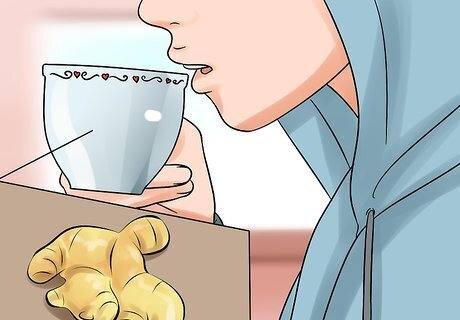
Drink ginger tea. Ginger may help to improve low menstrual blood flow and induce periods as it can increase oxygen levels and blood flow to the uterus, making the uterine lining healthier. Ginger contains vitamin B, manganese, potassium, magnesium and copper. It is an antioxidant which aids liver function, eases menstrual cramps and fights nausea, vomiting and diarrhea. Sipping 2-3 cups per day is recommended. Taking more than what’s needed can cause heartburn. Be cautious if you are taking blood thinners or medications for diabetes and high blood pressure.
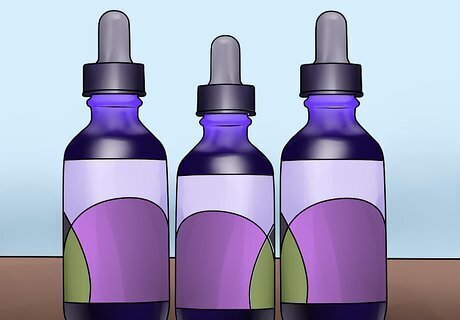
Use herbal medicines such as RejuvaFlow. This herbal medicine is a mixture of different kinds of herbs which help to enhance blood flow in the body, leading to healthy menstruation. RejuvaFlow contains botanical ingredients such as: Dong Quai, or Angelica, is a herb native to China, which works as tonic for iron deficiency and anemia. It aids blood flow to the pelvis, helping to improve scanty periods. Be cautious if taking medications that slow blood clotting such as Aspirin, Plavix, Voltaren, Ibuprofen, Naproxen, Lovenox, Heparin, or Warfarin. Black Cohosh is a very good remedy for the regularization of the menstrual cycle. It also aids in the shedding of the uterine lining. Be cautious if you have liver disease or are taking other medications that are hard on your liver. White Peony aids in balancing hormones in the body. Blood circulation is also improved, helping blood flow to the uterus for increased estrogen production. Be cautious if taking medications that slow blood clotting, see above for list. 60 drops of this medicine, three times a day is required. Stop using the medicine once your period returns or menstrual blood flow has increased. Never use this medicine during pregnancy or while breastfeeding. Make sure to read all of the ingredients before taking.

Take motherwort. Motherwort is often used by Chinese women to treat menopause or to stimulate menstrual flow. This is because a component of motherwort - leonurine - stimulates the uterus, aiding in increased menstrual blood flow. Motherwort also helps in easing menstrual cramps because it relaxes muscles in the uterus. For tincture dosage, half to 1 teaspoon twice daily is enough. If dried, use 1-2 teaspoons of the dried herb per one cup of boiling water. Add sugar, honey or lemon to compensate for the very bitter taste. Two cups per day is enough. Do not use motherwort during pregnancy or have a thyroid condition and do not give to children below two years of age.

Experiment with raspberry leaf remedies. Raspberry leaf is a great tonic for the uterus because it aids in its overall health. It tones the uterus and prevents cramps. It contains ferulic acid that helps stimulate uterine muscles thus easing menstrual flow. Raspberry leaf contains many nutrients that are beneficial for the reproductive system and other parts of the body. These include beta-carotenes, calcium, magnesium, phosphorus, alpha-carotenes, alkaloids, lutein, iron, B vitamins, and so much more. Make tea out of these leaves and drink several times a day to see any results. Raspberry leaf is not recommended for pregnant women as it stimulates contractions.
Using Relaxation Techniques

Reduce your stress levels. The body responds to stress in variety of ways. One of the ways which the body reacts to stress is by derailing the normal menstrual cycle. When a person is stressed the body releases certain chemicals. During stressful events, the hypothalamus releases cortisol. Cortisol has the effect of decreasing luteinizing hormone which causes decreased levels of progesterone and estrogen. If the levels of these hormones drop it leads to irregular menstruation, scanty menstruation or no menstruation at all. Therefore, the faster the body is relieved of stress, the earlier the normal amount of blood and the normal menstrual cycle will return. There are different ways to relieve stress such as yoga, visualization and progressive muscle relaxation.
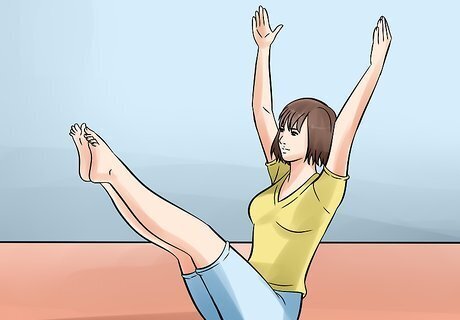
Practice yoga. Yoga practice can help a person stay calm and relaxed. Yoga is known to keep the body healthy and the mind clear, using mental, physical and spiritual practices. Yoga uses a series of physical postures to alleviate health problems, reduce stress and correct the alignment of the spine. See below for a few yoga poses that are particularly good for relieving stress and relaxing the body.
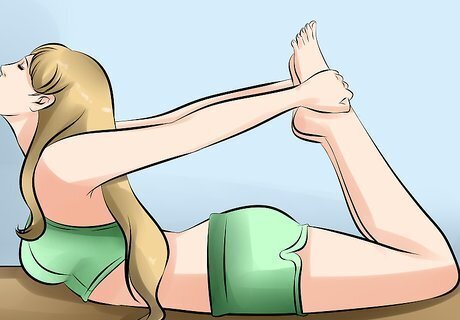
Try Dhanurasana (Bow Pose). This is done by lying on your stomach with feet hip-width apart. Place your arms along the side of your body. Hold the ankles by folding your knees. Take a deep breath and lift your chest off the ground by pulling your legs. Look straight ahead. Take long deep breaths when doing this pose. Do this for 15 to 20 seconds, then slowly bring your legs and chest back to the ground.
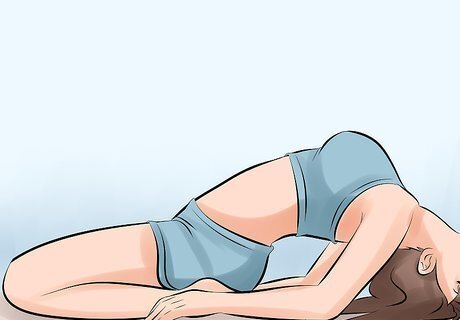
Do Matsyasana (Fish Pose). Lie with your back on the floor, keeping your knees bent and feet on the floor. Inhale while you lift your pelvis slightly and slide your hands down and place below the buttocks. Remember to place your forearms and elbows up close to the side of the torso. Inhale and press the forearms firmly against the floor. Press the scapula into your back and lift your head and upper torso away from the body. Keep the knees bent or straighten your legs on the floor. Hold this position for 15 to 40 seconds and breathe smoothly. Exhale while lowering your torso and back to the floor. Draw your thighs up into the belly and squeeze.
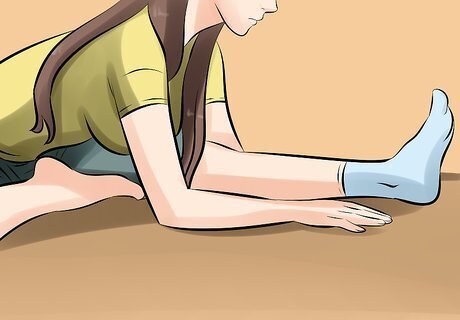
Give Janu Shirsasana (one-legged Forward Bend) a try. This can be done by sitting up with the legs stretched out. Keep your legs in front of you and your spine erect. Bend your left knee and keep the left foot opposite the right thigh. Take a deep breath and bring both arms above your head and stretch up. Rotate a little to the right from the waist. Exhale and reach forward from the hip joints. Maintain the proper posture of the spine. Hold on to your big toe and point your elbows forward. Maintain this position for 15 to 30 seconds, then do the same steps on the other side.
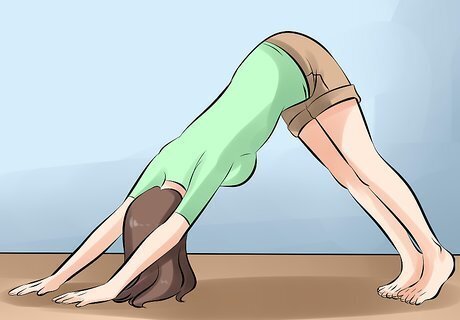
Get into Adho Mukha Shwanasana (Downward Facing Dog). Stand with your feet hip distance apart and place your hands by your sides side. Make sure that your weight is carried by both feet. Hinge forward at the waist and plant the palms of your hands flat on the floor. With fingers pointing forward, step each foot back until you are in the top part of a push up. Lift your hips up and press your chest towards your knees. Breathe deeply and exhale. Maintain this position for 15 to 30 seconds.
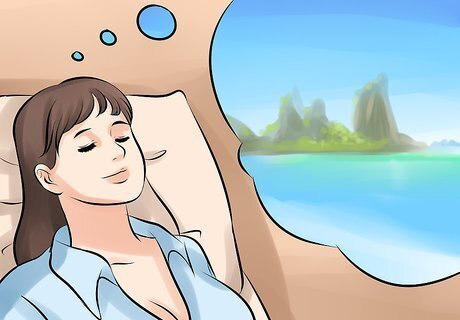
Relax using visualization. Another way to relax the mind is visualization. This relaxation technique is done by visualizing mental images which promote peacefulness and calmness. To perform visualization, pick a calm and quiet room. Sit in a comfortable position and loosen any tight clothes. Close your eyes and form a mental image that connotes peaces, such as the beach. For visualization to be most effective, it is better to use all your senses. Imagine the sound of the waves crashing, the smell of salt water and warmth of the sun on the skin. This can be done for 15 to 20 minutes.

Experiment with progressive muscle relaxation.This is done by focusing on the tension in your muscles and actively trying to relax them. This can either be done in a sitting or lying position and you can start from your neck going downward or from your toes going upward. Tense your muscle by flexing it for 5 seconds and releasing it for 30 seconds. Then extend it for 5 seconds and release it for 30 seconds. Move to the next part of the body and do the same. You can do this to your neck, fingers, arms, shoulders, back, hips, legs, feet and toes.



















Comments
0 comment